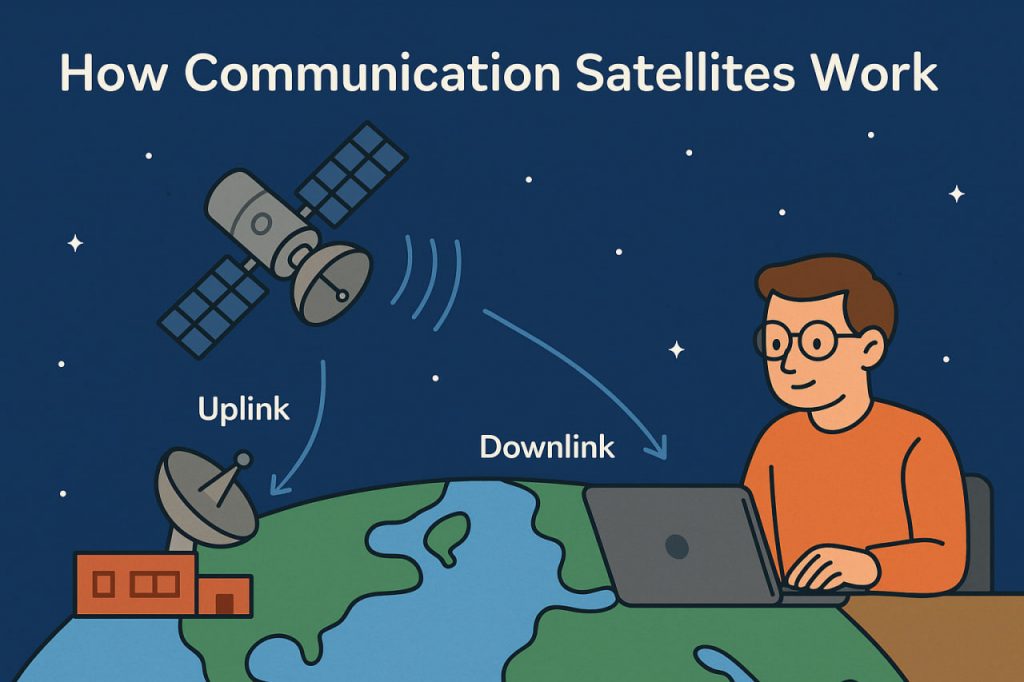Communication satellites play a vital role in modern life, enabling global phone calls, television broadcasts, GPS navigation, and internet access. These satellites orbit Earth and act like relay stations, capturing signals and bouncing them back to distant locations—instantly bridging thousands of kilometers.
What Is a Communication Satellite?
A communication satellite is a man-made object placed in orbit to transmit signals between two points on Earth. It carries antennas and transponders that receive, amplify, and redirect signals.
These satellites orbit at different altitudes depending on their purpose, most commonly:
- Geostationary orbit (GEO): 35,786 km above Earth; appears stationary from the ground
- Medium Earth orbit (MEO): 2,000–35,000 km; often used for navigation like GPS
- Low Earth orbit (LEO): 200–2,000 km; used for high-speed data and newer satellite internet systems
How Do Satellites Transmit Signals?
Here’s how communication via satellite works step by step:
- Uplink: A ground station sends a signal (e.g., TV broadcast) to the satellite.
- Amplification: The satellite receives the signal and boosts its strength.
- Downlink: The satellite transmits the signal to another location on Earth.
- The signal is received by another ground station, TV dish, cell tower, or internet receiver.
This process happens in fractions of a second, even across continents.
What Are Satellites Used For?
Communication satellites support a wide range of services:
- Television and radio broadcasts to remote areas
- Phone and video calls, especially in places without ground-based networks
- Satellite internet for aircraft, ships, and rural communities
- Military and emergency communications in disaster zones
- Navigation systems like GPS, GLONASS, and Galileo
- Weather monitoring and environmental data collection (via specialized satellites)
Without them, global communication and data transfer would be much slower and less reliable.
Advantages of Communication Satellites
- Wide coverage: One satellite can serve a huge area
- Remote access: Vital for rural, mountainous, or oceanic regions
- Resilience: Satellite networks work even when ground infrastructure is damaged
- Scalability: New constellations of LEO satellites can improve speed and reduce delay
They make global digital connectivity possible—even in the most isolated places.
Challenges and Considerations
Despite their benefits, communication satellites face some limitations:
- Signal delay (latency)—more noticeable with GEO satellites
- High cost of launch and maintenance
- Space debris risks from increasing satellite numbers
- Weather interference, especially in storms or heavy rain (mostly affects TV and internet signals)
Newer technologies aim to reduce these challenges by launching smaller, lower-orbit satellites in constellations.
Glossary
- Transponder – A device that receives and retransmits signals on a satellite
- Uplink – The signal sent from Earth to a satellite
- Downlink – The signal sent from a satellite back to Earth
- Latency – The delay between sending and receiving a signal
- Geostationary orbit – An orbit where a satellite stays fixed above one point on Earth


